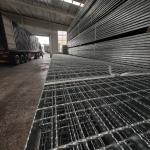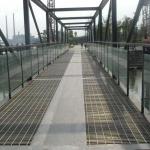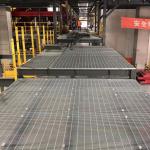product brief introduction
Steel grid plate is a metal sheet made of steel, commonly used
materials are ordinary carbon steel, stainless steel and aluminum
alloy.
Ordinary carbon steel refers to carbon steel materials containing
less alloying elements, and its main components are iron and
carbon. Ordinary carbon steel has good mechanical properties, high
strength, good toughness, wear resistance, suitable for use in the
general environment.
Stainless steel is a steel with better corrosion resistance, and
its main components are iron, chromium, nickel and other alloying
elements. Stainless steel has good corrosion resistance and
oxidation resistance, and can be used for a long time in harsh
environments such as humidity, acid and alkali.
Aluminum alloy is the material of alloying aluminum with other
metals, common aluminum-manganese alloy, aluminum-copper alloy and
aluminum-magnesium alloy. Aluminum alloy has the advantages of
light weight, high strength and good corrosion resistance, and is
widely used in aerospace and construction fields. |
Technical Parameters
| Transport Package | Packaged By Steel Belt With Pallet |
| Size | As Per Drawing,commoned 32*5 |
| Features | Anti-slip, Drainage, Ventilation |
| Thickness | 2mm-5mm,5mm |
| Bearing Bar Pitch | 30mm, 40mm, 50mm, Etc |
| Load Bearing Capacity | Heavy Duty |
| OEM | Available |
| Grating Standard | YB/T4001-2007 |
Product material diversity
Raw materials of steel grid plate are: flat steel, twist steel,
pattern plate.
The steel grid plate is an open steel member which is composed of
bearing flat steel and cross bar according to certain spacing and
fixed by welding or pressure lock. The transverse bar is generally
made of twisted square steel, round steel or flat steel, and the
material is divided into carbon steel and stainless steel.
Production method of steel grid plate:
The pressure welded steel grid plate is made of load flat steel and
cross bar arranged according to certain spacing longitude and
latitude, using 200 tons of hydraulic resistance welding automatic
equipment to weld into the original plate, through cutting,
opening, packaging and other processes.
Load flat steel spacing: the center distance between two adjacent
load flat steel, commonly used 30MM, 40MM two.
Bar spacing: The center spacing of two adjacent bars is usually
50MM and 100MM.











